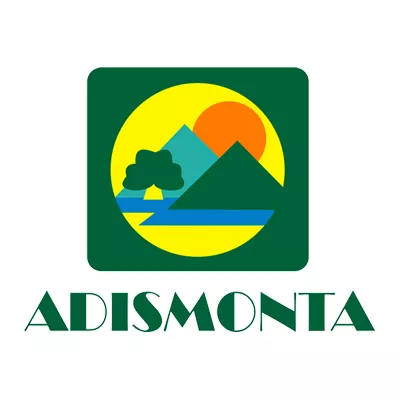General information
RDP Priority
- P6. Social inclusion and local development
RDP Focus Area
- 6B: Local development
RDP Measure
- M19: LEADER/CLLD
Summary
‘Plataforma Territorio Rural Inteligente’ helped transform a Spanish LEADER territory into more of a smart rural area by facilitating broad, multiagency participation in the digital transition of the local tourism offer and environmental protection actions. Across three interconnected areas of action, the project contributed to nature protection and the fight against depopulation through smart digitisation. It was promoted by the ADISMONTA Local Action Group in the region of Sierra de Montánchez y Tamuja.
Results
- 27 sustainability indicators implemented in an indicator visualisation platform, 23 of which are monitored by 22 municipalities.
- Three training actions and a consultations follow-up action for the implementation of smart destinations within the Inventrip platform.
- 25 Beacons signalled, and 39 virtual geo-beacons configured.
- 22 smart plaques and 22 lecterns distributed in each of the municipalities.

Promoter
LAG Adismonta - Asociacion Para El Desarrollo Integral De La Sierra De Montanchez Y Tamuja
Funding
Total budget 39 894.91 (EUR)
EAFRD 29 921.18 (EUR)
National/Regional 9 973.73 (EUR)
Resources
Documents
Smart Rural Territory Platform: The Smart Region
(PDF – 2.18 MB)
Context
Some of the most important challenges to be addressed by territorial planning include the digital and ecological transition and depopulation. This project stems from the need to modernise regional development strategies and it is based on two past experiences: the development of the Smart Specialization Strategy; and the Participatory Local Development Strategy, which already put into practice a strong participatory approach. ADISMONTA Local Action Group (LAG) applied in May 2020 to be one of the 17 European communities that would receive technical support to implement development strategies through the Smart Rural 21 program. Although the Sierra de Montánchez y Tamuja region was not one of the rural communities selected at that time, it has become part of the "Come Along" initiative in 2021. Within this initiative, the region presented its Smart Rural 21 Strategy in January 2021, developed within the framework of the Preparatory Action on Smart Rural Areas in the 21st Century.
Objectives
The Smart Rural project aimed to promote and inspire rural centres, villages, and towns to develop and implement smart rural territorial approaches and strategies in Europe. The project also aimed to foster the emergence of other smart territory projects as well as raise awareness about social and economic challenges in the region and the participatory processes through which they might be addressed.
Activities
The project strategy was organised around three main pillars: environmental sustainability; making the region a smart tourist destination; and taking on the demographic challenge. For each of the three pillars mentioned above, the following actions were implemented:
Environmental sustainability
-
- The development of a Territorial Sustainability Indicator Monitoring Service for the Sierra de Montánchez y Tamuja region.
- The development of a wide set of indicators such as surface temperature, soil humidity or light pollution, among others, with the aim of contributing to the conservation of the territory through environmental planning.
The region as an intelligent tourist destination
- The optimisation of the Inventrip platform/application, that is dedicated to travel planning and which collects information on tourism.
- The Tourist Signage Plan, which includes training activities for various key agents of the territory to maintain the database that aligns with the app to provide intelligent signage/wayfinding information in the territory.
- A beacons and geo-based beacons plan, which envisages the creation of a smart information ecosystem via the placement of beacons (devices with a Bluetooth signal that can link with mobile devices to send notifications based on the user's location) and geo-based beacons (a system that detects devices in an established area by GPS location and sends the notification even in areas without mobile coverage).
- A digitalisation plan for municipalities: the placement of plaques and lecterns in each of the participating municipalities.
- The provision of technical assistance to support the updating of tourism data; the design of complementary digital material; the design of gamification campaigns, and the creation of quarterly destination monitoring reports.
Demographic observatory
-
- The visualisation and monitoring of socio-economic and demographic indicators on a regional scale. The elaboration of a Local Development Strategy, the objective of which is to assess the evolution of the population and propose corrective measures and interventions which might tackle the demographic challenge (territorial cohesion).
Main results
The results derived from the project included:
- 27 sustainability indicators implemented in an indicator visualisation platform, 23 of which are monitored by 22 municipalities.
- Three training actions and a consultations follow-up action for the implementation of smart destinations within the Inventrip platform.
- 25 Beacons signalled, and 39 virtual geo-beacons configured.
- 22 smart plaques and 22 lecterns distributed in each of the municipalities.
- Campaigns in social networks based on smart destination tourism.
- Indicators implemented on a demographic viewer or observatory platform.
- Integration of these three smart territory activities on one website, among the new contents added to the web portal.
Key lessons
It is useful to obtain indicators showing an area’s own advantages.
Tourist destinations that become smart can be successful tourist destinations.
It is possible and necessary to move rural areas towards digitalisation and energy transition
